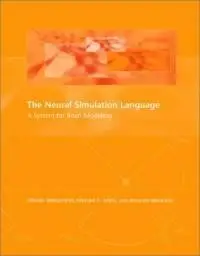The Neural Simulation Language: A System for Brain Modeling
9780262731492 (0262731495) | MIT Press, 2002 | 4 MB | RS | FF
The Neural Simulation Language (NSL), developed by Alfredo Weitzenfeld, Michael Arbib, and Amanda Alexander, provides a simulation environment for modular brain modeling. NSL is an object-oriented language offering object-oriented protocols applicable to all levels of neural simulation. One of NSL's main strengths is that it allows for realistic modeling of the anatomy of macroscopic brain structures.
The book is divided into two parts. The first part presents an overview of neural network and schema modeling, a brief history of NSL, and a detailed discussion of the new version, NSL 3.0. It includes tutorials on several basic schema and neural network models. The second part presents models built in NSL by researchers from around the world, including those for conditional learning, face recognition, associative search networks, and visuomotor coordination. Each chapter provides an explanation of a model, an overview of the NSL 3.0 code, and a representative set of simulation results.
Since 1985 more than a hundred neurosimulators have been developed (see Murre (1995) for a list of many of the most important ones). These neurosimulators can be generally described as software packages intended to reduce the time and effort in simulating neural networks, ranging from the most rudimentary unsupported systems provided at no cost by academia, to the very expensive ones provided by industry for commercial use with technological applications in mind. Academia neurosimulators tend to be used for exploring new biological and artificial neural architectures while commercial packages are primarily used in non-biological areas such as credit-assessment, signal analysis, time-series prediction, pattern recognition and process control. These particular commercial systems tend to support a predefined set of artificial neural networks. Most existing neurosimulators are useful when using and extending standard paradigms but not so much when developing new ones, a phenomenon marked by the proliferation of the large number of simulators developed by researchers to experiment with specific new neural architectures.



